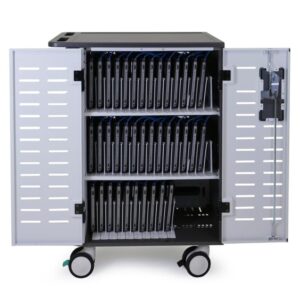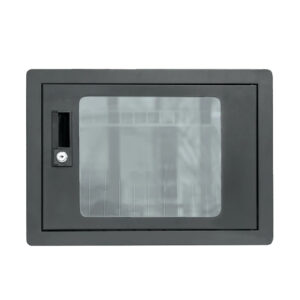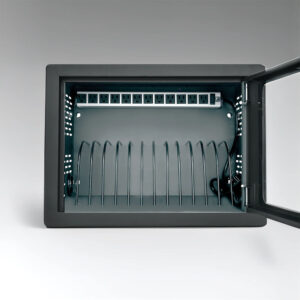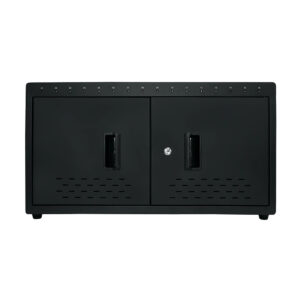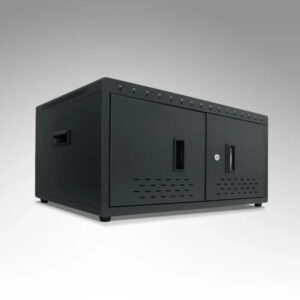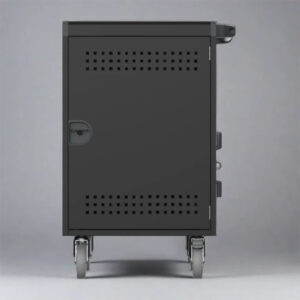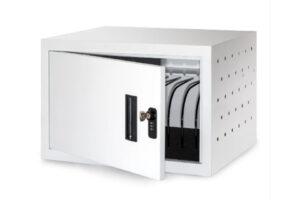Summary
Charging cabinets are specialized storage solutions designed to securely charge and organize multiple electronic devices simultaneously, making them invaluable in schools, offices, and public spaces. Their rise in popularity can be attributed to the increasing reliance on portable devices such as smartphones, tablets, and laptops, necessitating efficient charging solutions that enhance device readiness and management. By centralizing charging needs, these cabinets not only minimize clutter but also protect valuable technology from theft and damage, thereby contributing to a more organized and secure environment.
In educational settings, charging cabinets facilitate the integration of technology in classrooms, ensuring that devices are always charged and accessible for students and educators. This enhances the learning experience by promoting digital engagement and interactive lessons, while also safeguarding against loss or theft. In the corporate world, these cabinets streamline device management and improve employee productivity by ensuring that devices are readily available and charged, reducing downtime and enabling smoother workflows.
Moreover, charging cabinets have found their place in public spaces like airports, libraries, and shopping malls, enhancing customer satisfaction and increasing foot traffic. By providing convenient charging solutions, businesses can encourage longer visits and higher customer engagement, potentially boosting revenue through increased patronage and advertising opportunities. The widespread adoption of charging cabinets reflects a broader trend towards integrating technology into everyday environments, addressing both functional needs and the expectations of a tech-savvy public.
Despite their many benefits, challenges such as initial investment costs, ongoing maintenance, and the need for compliance with safety regulations can hinder the implementation of charging cabinets. Organizations must navigate these considerations to maximize the utility of charging solutions while ensuring user engagement and adapting to rapidly evolving technological demands. Overall, the strategic use of charging cabinets underscores their role as essential tools in supporting modern lifestyles across various sectors.
Table of Contents
Historical Background
The evolution of charging solutions can be traced back to the increasing proliferation of portable electronic devices in the late 20th and early 21st centuries. As smartphones, tablets, and laptops became ubiquitous, the need for efficient and secure charging options grew significantly. Early charging solutions were often basic and scattered, consisting mainly of individual chargers for each device, which led to cluttered spaces and logistical challenges, particularly in environments like schools and offices where multiple devices needed simultaneous charging.
As technology advanced, the concept of charging cabinets emerged. These units were designed to consolidate charging needs into a single location, allowing multiple devices to be charged securely and efficiently. By the early 2010s, educational institutions began to adopt charging cabinets to manage the increasing use of technology in classrooms. This shift was driven by the necessity for organized storage and the desire to protect valuable electronic devices from theft and damage.
By the mid-2010s, charging cabinets started to incorporate features like surge protection, cooling systems, and smart charging technology, which enhanced their functionality and safety. The rise of digital learning environments during this period further accelerated their adoption, as schools recognized the importance of keeping devices powered and accessible for students and faculty alike.
In the corporate sector, companies began to realize the benefits of providing secure charging solutions to improve employee efficiency and satisfaction. Smart charging cabinets became popular in office settings, where they facilitated better management of personal devices and encouraged a more productive work environment by ensuring that devices were always charged and ready for use.
Today, charging cabinets are not only prevalent in schools and offices but are also widely used in public spaces such as malls, airports, and libraries. Their integration into these environments highlights the ongoing demand for convenient and reliable charging solutions as society continues to embrace a technology-driven lifestyle.
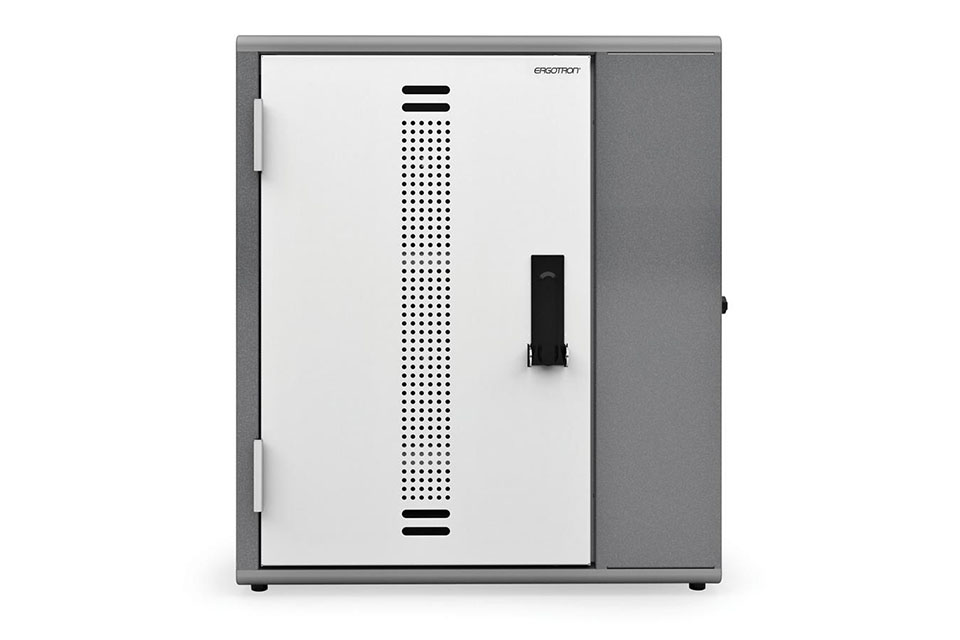
Features of Charging Cabinets
Charging cabinets, also referred to as charging stations or charging carts, are designed to efficiently manage and charge multiple electronic devices simultaneously. These secure storage units incorporate several key features that enhance their functionality and usability across various settings, such as educational institutions, corporate offices, and public spaces.
Design and Capacity
Charging cabinets are specifically designed to accommodate a variety of devices, including tablets, laptops, Chromebooks, and smartphones. They typically feature built-in power outlets and USB ports, allowing for simultaneous charging of multiple devices. The design often includes adjustable shelves or compartments to organize devices neatly, reducing clutter and improving access.
Advanced Charging Technology
Many charging cabinets come equipped with advanced charging technologies, including smart charging capabilities that optimize charging efficiency and minimize downtime. These features can automatically adjust the power supply based on the specific requirements of each device, ensuring safe and rapid charging. Additionally, built-in surge protection and thermal management systems help safeguard devices from damage during charging.
Safety and Security
Security is a crucial aspect of charging cabinets, particularly in settings where devices are valuable or sensitive. Most models include locking mechanisms to prevent unauthorized access, ensuring that devices remain secure while charging. Safety features such as short-circuit protection and thermal protection further enhance user safety and device longevity by mitigating risks associated with overheating or electrical faults.
User-Friendly Features
To improve user experience, charging cabinets often include design elements that promote ease of use. This can include intuitive layouts for accessing devices, as well as effective cable management solutions to prevent tangling and facilitate organization. Some cabinets also feature real-time monitoring systems that provide updates on charging status, allowing users to manage their devices effectively.
Versatile Applications
Charging cabinets are increasingly utilized in diverse environments, from schools and hospitals to malls and corporate offices. They provide a centralized solution for device charging, helping to streamline operations and enhance productivity by ensuring that devices are always charged and ready for use. As technology continues to evolve, charging cabinets are being adapted to meet the growing needs of various industries, reinforcing their role as essential tools in modern life.
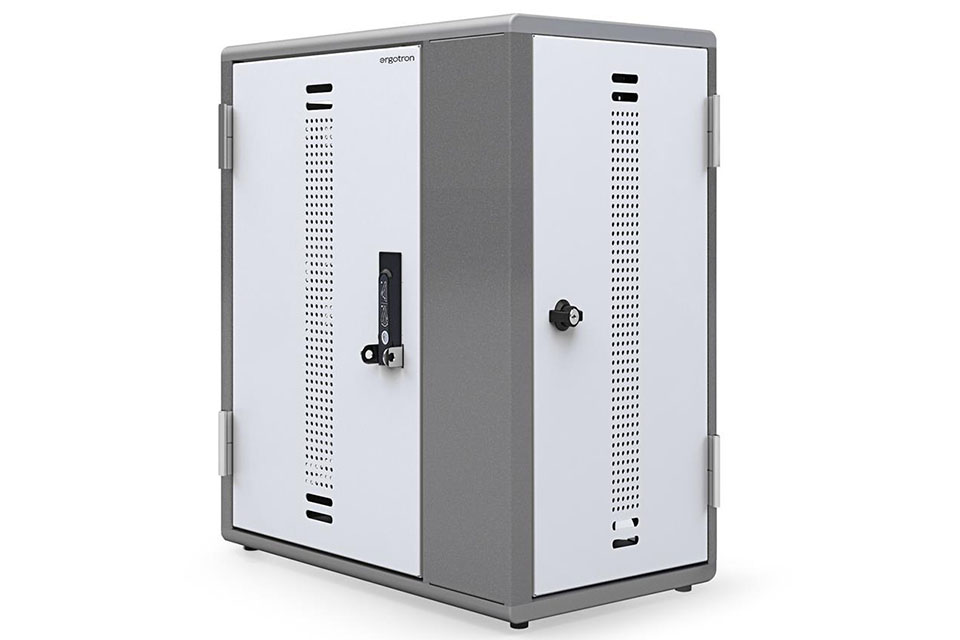
Benefits in Schools
Charging cabinets offer a multitude of benefits for educational institutions, enhancing both the functionality of devices and the overall learning environment.
Ensuring Device Readiness
One of the primary advantages of charging cabinets is their ability to ensure that devices are always ready for use. By providing a centralized storage solution, these cabinets allow for efficient device management, making it easy for students and educators to access fully charged devices when needed. This eliminates the common issue of last-minute charging and enables a seamless integration of technology into the classroom, promoting digital learning and interactive lessons.
Security and Organization
Charging cabinets also significantly enhance security by reducing the risk of device loss or theft. With all devices stored in one secure location, schools can minimize the likelihood of replacements due to missing items. The robust design of these cabinets, featuring secure locks and durable construction, ensures that valuable technology investments are protected. Furthermore, the organized layout of charging stations helps streamline equipment management, reducing classroom interruptions and fostering a culture of responsibility among students regarding technology usage.
Support for Digital Learning
The implementation of charging solutions supports the integration of digital tools in the classroom, encouraging educators to experiment with new teaching methods and resources. As a result, students benefit from enriched learning experiences that align with modern educational curricula. Charging cabinets facilitate a transition to technology-driven learning environments, ultimately contributing to improved student outcomes and success.
Cost-Effectiveness
While the initial investment in charging cabinets may appear significant, they prove to be a cost-effective solution in the long run. By protecting devices from damage, loss, or theft, schools can reduce replacement costs and ensure a higher return on investment. This financial efficiency underscores the importance of quality charging solutions as schools aim to safeguard their technological assets.
User-Friendly Design
Charging cabinets are designed to be user-friendly, simplifying the charging process for both students and staff. Many schools report a noticeable decrease in classroom disruptions as students become accustomed to using these systems. The adaptability of charging solutions allows customization to meet the specific needs of each educational environment, ensuring that all students have access to the necessary technology for their academic pursuits.
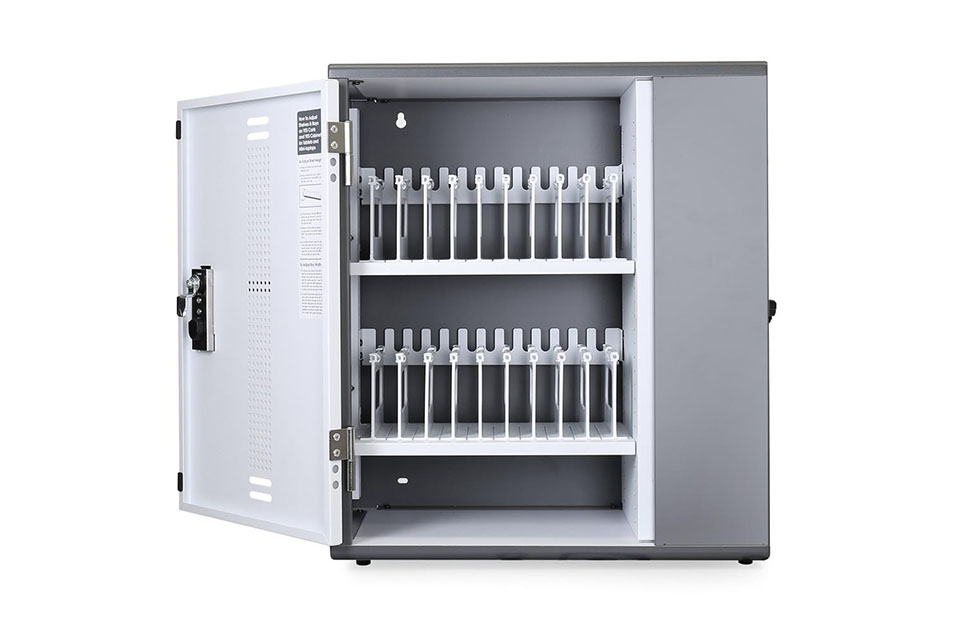
Benefits in Offices
The integration of charging cabinets in office environments offers numerous advantages that enhance productivity, organization, and overall employee satisfaction.
Enhanced Device Management
Charging cabinets provide centralized storage for multiple devices, allowing for efficient device management within the workplace. By organizing laptops and tablets in one secure location, offices can eliminate clutter and streamline access, reducing delays that often arise from disorganized workspaces. This system not only keeps devices charged and ready for use but also ensures that employees spend less time searching for equipment and more time focusing on their tasks.
Increased Productivity
With the convenience of easily accessible, fully charged devices, employees can maintain a higher level of productivity. Charging cabinets facilitate quick loaner or replacement device checkouts, ensuring that staff can resume their work without significant interruptions due to device failures. This swift access to technology empowers employees, enabling them to remain engaged and productive throughout their workday.
Improved Security
Security is a crucial aspect of office technology management, and charging cabinets enhance this by providing secure charging and storage options. Devices can be locked away, reducing the risk of theft or loss, which is particularly important in shared environments. This peace of mind allows employees to concentrate on their work without the worry of safeguarding their devices.
Flexibility and Scalability
Modern offices often require adaptable solutions that can cater to varying needs. Charging cabinets offer mobility and flexibility, allowing them to be repositioned as necessary to meet changing workspace dynamics. Moreover, the ability to charge multiple devices simultaneously makes them suitable for any office size, whether accommodating a few users or a larger workforce.
Contribution to Sustainability
By providing efficient charging solutions, these cabinets can also support an organization’s sustainability goals. They help manage energy use more effectively, ensuring that devices are charged only when needed and potentially lowering energy costs associated with device management. This approach aligns with the increasing emphasis on environmental responsibility in modern workplaces, where 69% of employees express a desire for companies to invest in green efforts.
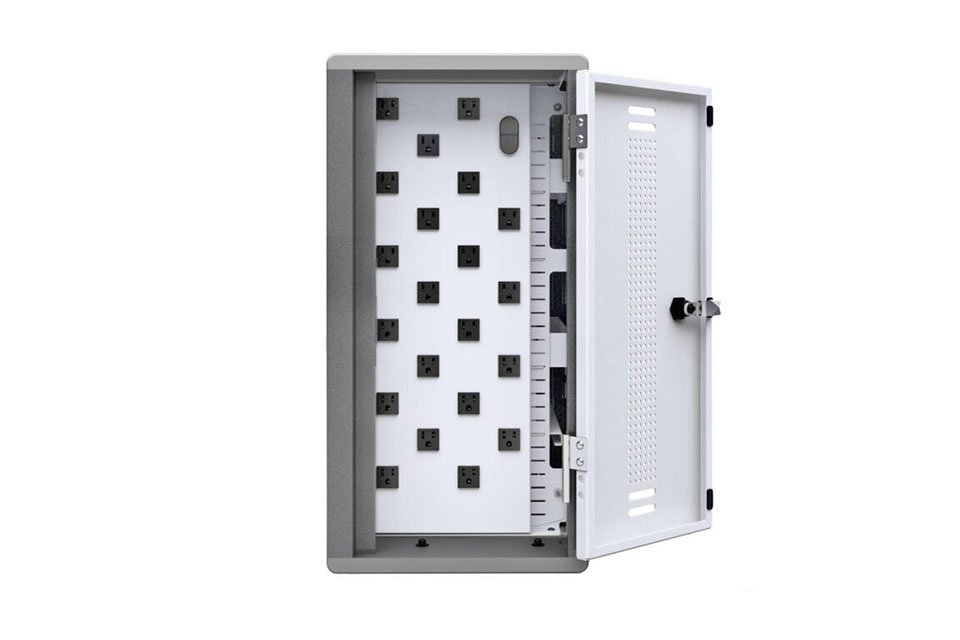
Benefits in Public Spaces
Installing phone charging stations in public spaces offers numerous advantages that enhance the overall experience for both customers and employees.
Enhancing Customer Satisfaction
One of the primary benefits of providing charging stations is the significant enhancement of customer satisfaction. In environments like entertainment venues, a dead cell phone battery can detract from the overall experience by preventing access to essential services such as paperless ticketing, social media engagement, and ride-sharing applications. When customers have reliable access to charging facilities, they are more likely to enjoy their time, leading to positive associations with the venue or business.
Driving Greater Foot Traffic
Public spaces that offer charging solutions can attract more visitors. The presence of phone charging stations encourages individuals to stay longer, facilitating increased foot traffic. This can be especially beneficial in high-traffic areas like libraries, student centers, and cafes, where patrons may wish to charge their devices while using the space. As a result, businesses may see an uptick in customer engagement and retention.
Boosting Revenue Potential
In addition to enhancing customer satisfaction, charging stations can contribute to increased revenue potential. Businesses can monetize these stations through advertising or partnerships with local companies, providing a platform for promoting events or services while supporting local economies. Furthermore, by alleviating low-battery anxiety, businesses can ensure that customers remain engaged and more likely to make purchases, thereby boosting overall sales.
Increased Safety and Connectivity
Providing charging facilities also enhances safety in public spaces. A reliable power source allows individuals to use safety apps and maintain communication during emergencies. This is particularly crucial in locations where users might be more vulnerable, as charged devices facilitate quicker access to help if needed.
Improved Employee Productivity
For employees working in public spaces or businesses with high foot traffic, having access to charging stations can significantly improve productivity. Employees who can easily charge their devices are more likely to stay connected and effective in their roles, which benefits the organization as a whole. By minimizing the stress associated with low-battery anxiety, employees can focus on their tasks without the distraction of device limitations.

Considerations and Challenges
When implementing charging cabinets in schools, offices, and public spaces, several considerations and challenges must be addressed to ensure a successful deployment.
Initial Investment and Financial Planning
One of the primary challenges involves the initial financial investment required for acquiring and installing charging cabinets. Although these units can prove cost-effective over time due to their operational efficiency and longevity, the upfront costs can be substantial. Organizations must consider various financing options, such as cash purchases or loans, and evaluate potential incentives that can offset these initial expenses. Understanding the economic model of the charging system is crucial to determine the best financing route for each specific situation.
Compliance with Safety and Legal Regulations
Ensuring compliance with safety and legal requirements is vital when installing charging cabinets. Organizations must stay updated on evolving local, state, and national regulations governing charging infrastructure to protect users and their investments. This includes navigating the necessary permits and safety inspections that can complicate and delay installation processes.
Operational Costs and Maintenance
Ongoing operational costs, including electricity, software fees, and regular maintenance, represent another critical challenge. While these costs can be managed effectively, they require diligent planning and budgeting to ensure that the charging stations remain functional and provide a satisfactory user experience over time. Proper management of charging infrastructure is essential for extending the lifespan of electronic devices and minimizing wear and tear on batteries, ultimately leading to reduced replacement costs.
Scalability and Future Expansion
Planning for scalability from the outset is crucial for organizations aiming to adapt to increasing demand for charging solutions. Selecting equipment that allows for easy upgrades and choosing locations that can accommodate additional chargers will position organizations for future growth. Additionally, organizations must consider their power supply needs and infrastructure capabilities to prevent operational disruptions as they expand their charging capacity.
Addressing User Engagement and Education
Another challenge lies in ensuring user engagement and education regarding the proper use of charging cabinets. Schools and workplaces must implement strategies to promote awareness of charging protocols and the benefits of utilizing these solutions. Educators and administrators must foster an environment that encourages the responsible use of charging resources to maximize their impact on learning and productivity outcomes.
Technological Adaptability
The rapid pace of technological advancement can also pose a challenge for organizations implementing charging cabinets. Staying abreast of new developments, such as updates in charging technology and software improvements, is essential to maintaining the effectiveness of the installed infrastructure. Failure to adapt to these changes may result in inefficient charging practices or reduced performance of charging cabinets.
Future Trends
In the evolving landscape of office environments, flexibility and adaptability are becoming paramount. The modern workplace is shifting from static, cubicle-style designs to dynamic spaces that cater to the diverse needs of employees throughout the day. This transformation is driven by advancements in technology and a growing recognition that traditional office layouts no longer suffice. Employees increasingly demand workspaces that can morph to support various activities, such as focused work, collaboration, and informal discussions.
Technological Integration
The integration of advanced technologies, particularly artificial intelligence (AI), is set to revolutionize office design. AI tools provide actionable insights that enable organizations to create environments tailored to employee preferences and behaviors. For instance, smart building systems can automatically adjust to the needs of occupants, enhancing comfort and efficiency. Additionally, generative design platforms help architects explore multiple design scenarios, promoting sustainability and adaptability in workspace configurations.
Flexible Workspaces
As companies embrace hybrid work models, the concept of the office as a fixed location is fading. Instead, offices are evolving into multifunctional hubs that prioritize collaboration and community connection, while still accommodating remote work capabilities. This evolution is expected to manifest in modular spaces that can be reconfigured for different purposes, such as meeting rooms that transform into casual gathering areas.
Sustainability and Wellness
Future office designs will also prioritize sustainability and employee well-being. Features like living walls, natural lighting, and eco-friendly materials will become standard, reflecting a commitment to creating healthier work environments. These design elements not only enhance the aesthetic appeal of the workplace but also contribute to the overall well-being of employees, fostering a more productive atmosphere.




